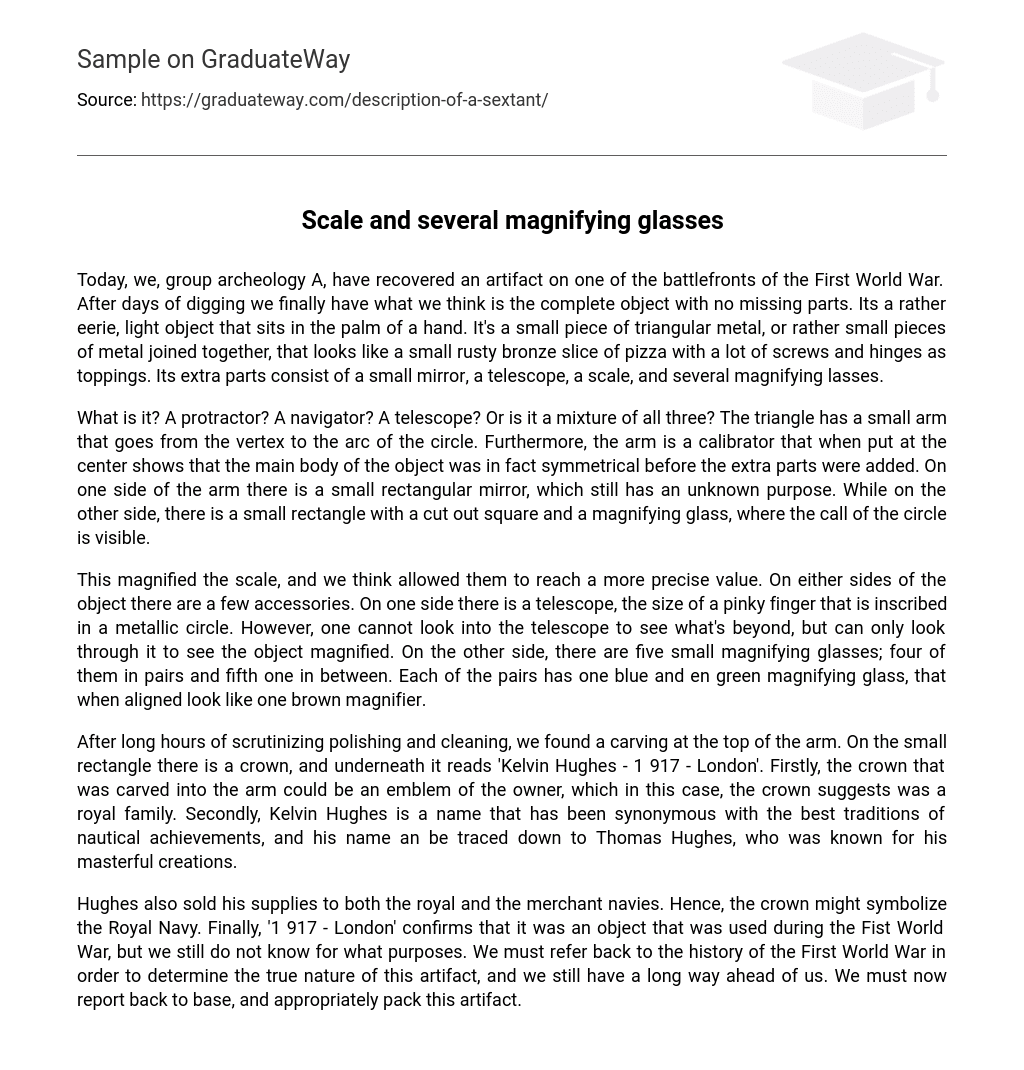Today, we, group archeology A, have recovered an artifact on one of the battlefronts of the First World War. After days of digging we finally have what we think is the complete object with no missing parts. Its a rather eerie, light object that sits in the palm of a hand. It’s a small piece of triangular metal, or rather small pieces of metal joined together, that looks like a small rusty bronze slice of pizza with a lot of screws and hinges as toppings. Its extra parts consist of a small mirror, a telescope, a scale, and several magnifying lasses.
What is it? A protractor? A navigator? A telescope? Or is it a mixture of all three? The triangle has a small arm that goes from the vertex to the arc of the circle. Furthermore, the arm is a calibrator that when put at the center shows that the main body of the object was in fact symmetrical before the extra parts were added. On one side of the arm there is a small rectangular mirror, which still has an unknown purpose. While on the other side, there is a small rectangle with a cut out square and a magnifying glass, where the call of the circle is visible.
This magnified the scale, and we think allowed them to reach a more precise value. On either sides of the object there are a few accessories. On one side there is a telescope, the size of a pinky finger that is inscribed in a metallic circle. However, one cannot look into the telescope to see what’s beyond, but can only look through it to see the object magnified. On the other side, there are five small magnifying glasses; four of them in pairs and fifth one in between. Each of the pairs has one blue and en green magnifying glass, that when aligned look like one brown magnifier.
After long hours of scrutinizing polishing and cleaning, we found a carving at the top of the arm. On the small rectangle there is a crown, and underneath it reads ‘Kelvin Hughes – 1 917 – London’. Firstly, the crown that was carved into the arm could be an emblem of the owner, which in this case, the crown suggests was a royal family. Secondly, Kelvin Hughes is a name that has been synonymous with the best traditions of nautical achievements, and his name an be traced down to Thomas Hughes, who was known for his masterful creations.
Hughes also sold his supplies to both the royal and the merchant navies. Hence, the crown might symbolize the Royal Navy. Finally, ‘1 917 – London’ confirms that it was an object that was used during the Fist World War, but we still do not know for what purposes. We must refer back to the history of the First World War in order to determine the true nature of this artifact, and we still have a long way ahead of us. We must now report back to base, and appropriately pack this artifact.





